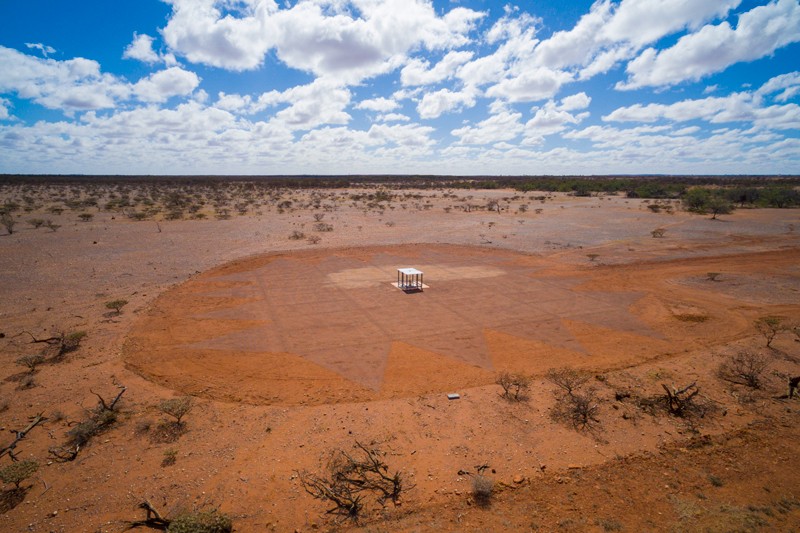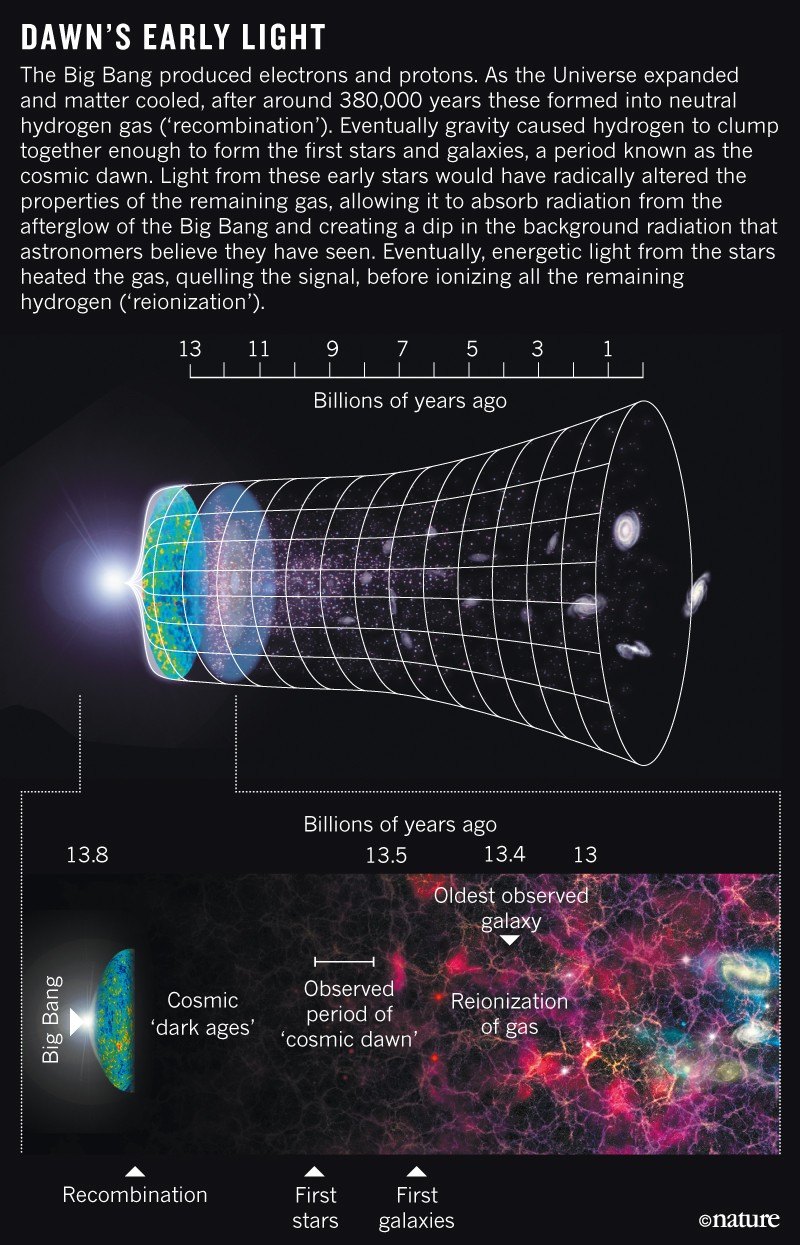
 A radio telescope in Western Australia has detected a sign of the light from the Universe’s first stars.
A radio telescope in Western Australia has detected a sign of the light from the Universe’s first stars.
Astronomers have for the first time spotted long-sought signals of light from the earliest stars ever to form in the Universe — around 180 million years after the Big Bang.
The signal is a fingerprint left on background radiation by hydrogen that absorbed some of this primordial light. The evidence hints that the gas that made up the early Universe was colder than predicted. This, physicists say, is a possible sign of dark matter’s influence. If confirmed, the discovery could mark the first time that dark matter has been detected through anything other than its gravitational effects.
Physicists think that the Big Bang, 13.8 billion years ago, generated an ionized plasma, which cooled rapidly as the Universe expanded, clumping together to form stars. Light from these stars would now be so faint that detecting it with Earth-based telescopes is near impossible.To search for the signal, the team used a radio telescope called the Experiment to Detect the Global Epoch of Reionization Signature (EDGES), based at the Murchison Radio-astronomy Observatory in Western Australia. Because our own galaxy and human-generated FM radio generate waves in the same band as the signal, spotting the dip in the intensity of the cosmic microwave background meant carefully filtering out these more powerful sources.

Judd Bowman, an astronomer at Arizona State University in Tempe states "This is the first time we’ve seen any signal from this early in the Universe, aside from the afterglow of the Big Bang". Other teams will need to confirm the signal but, so far, the finding seems to be robust, he says. “It’s very exciting stuff. This is a period in the Universe’s history we know very little about.”
Other experiments, such as LOFAR (Low-Frequency Array), a large system of radio antennas spread over five European countries, should be able to go a step further and map how the intensity of the signal fluctuates across the sky. And if the cause of the strong signal is dark matter, that should be visible as a distinctive pattern. “We’re eager for another instrument to confirm it,” says Bowman.
"We’ve been trying to study the period when stars first formed for 35 years," says Martha Haynes, an astronomer at Cornell University in Ithaca, New York. “I’m excited to think that we have finally detected the signal sought for so long.”
- Bowman, J. D., Rogers, A. E. E., Monsalve, R. A., Mozdzen, T. J. & Mahesh, N. Nature 555, 67–70 (2018).
- Barkana, R. Nature 555, 71–74 (2018).

